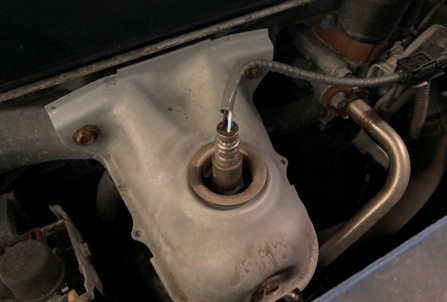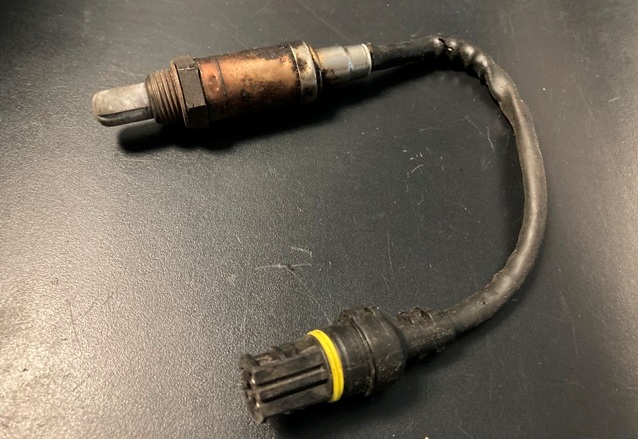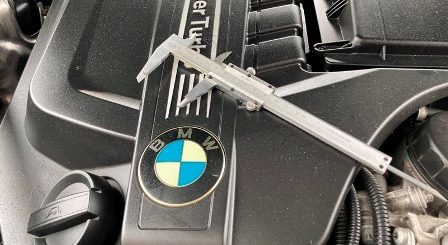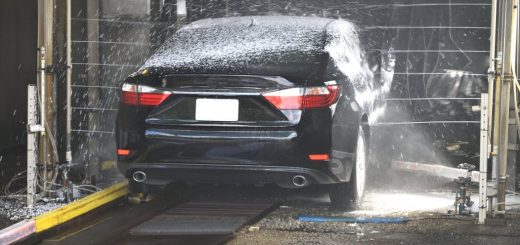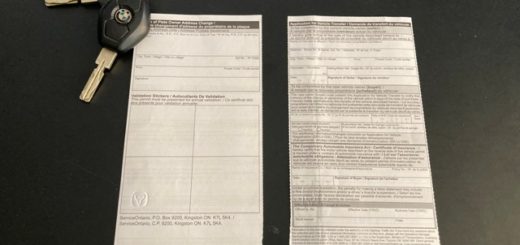What is an Oxygen Sensor and How it Works
What is Oxygen or O2 Sensor?
Oxygen Sensors have been installed in production cars since 1980s and are an important part of exhaust system and emissions control system. Oxygen sensor is a small probe, tasked to test exhaust gases. It feeds that information to ECU or Electronic Control Unit, computer controlling engine operation. For gasoline engines best fuel to air ration is 14.7 to 1.
Oxygen sensor will detect if fuel to air ration is not optimal by reassuring amount of oxygen in exhaust gases. Lean mixture is when amount of air is higher than normal specifications. Rich mixture on the other hand is created when amount of fuel is higher than normal specifications.
Both lean and rich mixture will lower engine performance and affect fuel efficiency. Oxygen sensor job is to prevent lean or rich mixtures by providing ECM with exhaust oxygen readings. ECM in turn will raise or lower fuel to air mixture for a balanced fuel combustion.
Detailed post from sensor manufacturer NGK: Oxygen Sensor Operation.
Location Of (O2) Oxygen Sensors
Cars have one oxygen sensor located before catalytic converter and another one after catalytic converter. O2 sensor before catalytic converter is Upstream O2 sensor. O2 Sensor after catalytic converter is Downstream O2 sensor.
Upstream O2 sensor regulates fuel/air mixture while downstream O2 sensor checks operation of catalytic converter.
Cars with 4 cylinder engines have two oxygen sensors. Vehicles with 6 (or more) cylinders have 4 oxygen sensors (two per each engine bank). O2 sensors will cost anywhere from $100 to $300, depending on sensor brand and type of vehicle.
What (O2) oxygen sensor does?
Upstream O2 Sensor
Upstream O2 sensor controls engine fuel to air ratio. It measures how much oxygen is in engine emissions and sends information to ECU creating best fuel to air ratio. Fuel to air ratio is important and should be within optimal specifications for a perfect fuel burn and engine performance.
Oxygen sensor provides information which prevents a lean mixture (more oxygen and less fuel) or a rich mixture (more fuel and less oxygen). ECU will add fuel or air in accordance with O2 sensor readings for optimal fuel to air ratio.
Downstream O2 sensor
Downstream O2 sensor is a monitoring sensor, called bank 1 sensor 2. I monitors operation and condition of catalytic converter. Check engine light will be triggered if downstream O2 sensor senses abnormalities with catalytic converter operation, or catalytic converter failure.
Amount of oxygen released by catalytic converter should be steady hence voltage on downstream oxygen steady should be steady too when catalytic converter is functioning normally.
Large variation on oxygen amount after catalytic converter point to catalytic converter failure. Downstream sensor voltage will be higher or lower and trigger a check engine light to warn about catalytic converter failure or variations in fuel to air ratio mixture.
How Long Oxygen Sensor Last
Oxygen sensors are subjected to high temperatures created by engine exhaust. There is no clear cut answer on this as here are many factors but generally an Oxygen sensor will last about 150,000km, about 10 years give or take. Lifespan will also depend on oxygen sensor quality, a cheap aftermarket knockoff sensor will last far less than OEM equipment.
Lifespan of O2 sensor also depends on your engine operation. If your car is not operating normally (misfires, lean or rich fuel mixture, etc), oxygen sensor lifespan will be shorter. When engine is not operating optimally, oil and un-burned fuel will end up in exhaust system, prematurely wearing oxygen sensors. Oil will sludge oxygen sensor or damage its internal components causing failure.
Oxygen Sensor Failure
An O2 sensor failure will trigger check engine light. Failures usually happens from contamination of O2 sensor by unburned fuel or failure of internal O2 sensor elements. Malfunctioning O2 sensor will cause engine ECU to blindly set fuel to air ratio to a predetermined setting which is not optimal for engine operation.
Failed O2 sensor will increase fuel consumption, decreased engine performance, bad or rough engine idling and misfires.
Oxygen sensors are not part of routine maintenance. O2 sensors should be replaced only when sensor malfunction. Trouble codes will be stored when oxygen sensor fails. Some generic codes related to O2 sensors are: P0171, P0315, P0175, P0141, P0162, P0155.
(If you are looking for a fast and easy solution to sell your car, more here on “How To Sell Your Car Fast In Ontario”. )
Bad Oxygen Sensor Symptoms
1- Bad Engine Idling
Oxygen sensor measures oxygen in exhaust regulating fuel to air mixture. If oxygen sensors fails, vehicle ECM will get false readings or no readings at all. This will cause either a lean or rich fuel mixture affecting engine idle operation.
2- Low Fuel Efficiency
As we said earlier, a failed oxygen sensor can cause a rich fuel mixture. Rich fuel mixture means there is more fuel than air inside combustion chamber. Fuel will not burn completely and will end up in exhaust system un-burned. Fuel efficiency will suffer as a result.
3- Emission Test Failure
Faulty oxygen sensors will cause an emission test failure. Emission test machine measures fuel to air ratio, checks pollution system and engine operation. If these are not within g optimal parameters, vehicle will fail emission testing.
4- Reduced Engine Power
Engine power will suffer if oxygen sensor are not operating normally. Fuel to air mixture is primary factor for reaching peak engine performance. Misfire can also occurs if O2 sensor is providing false information to ECM.
Catalytic converter can be damaged if oxygen sensors fail, fuel/air mixture becomes rich and engine dumps un-burned fuel in exhaust system. If you have a check engine light make sure to repair it as soon as possible. Neglecting check engine light can cause bigger problems if left unchecked.
Sensor Heater Circuit Failure
O2 sensors are equipped with a heater element which heats O2 sensor and bring it up to operating temperature faster on engine cold starts. Heater element heats sensors to about 300 degrees Celsius for reaching best O2 sensor performance faster. If heater circuit malfunctions check engine light will be triggered with a O2 Sensor Heater Circuit trouble code.
However, heater circuit failure does not equal O2 sensor failure. Oxygen sensor will continue to operate with a failed heater circuit. However, only when engine is fully warmed up and O2 sensor has reached 300 degree Celsius. Fuel economy will suffer until engine reaches normal operating temperature if upstream O2 sensor has a failed heater circuit.
Can You Drive with a Failed Oxygen Sensor
Short answer is: Yes, your car will still drive even if oxygen sensor completely fails. However, its neither advisable nor recommended to drive with a failed O2 sensor. First, fuel economy will suffer greatly, you will spend more money on gas. Money you can use to buy a new sensor.
Second, overtime is guaranteed you will destroy your catalytic converter if you keep driving with a failed oxygen sensor. If that happens (and it will), we are not talking about $150 oxygen sensor anymore, but $1,000 or more catalytic converter…and oxygen sensor.
Catalytic converter will be damaged by extra fuel in exhaust system and can even get clogged. If catalytic converter is clogged your car will become un-drivable and major expenses in repair cost will follow.
Comments: If you have any questions or suggestions related to this post or Used Car Toronto in general, don’t hesitate to use comment section below.


